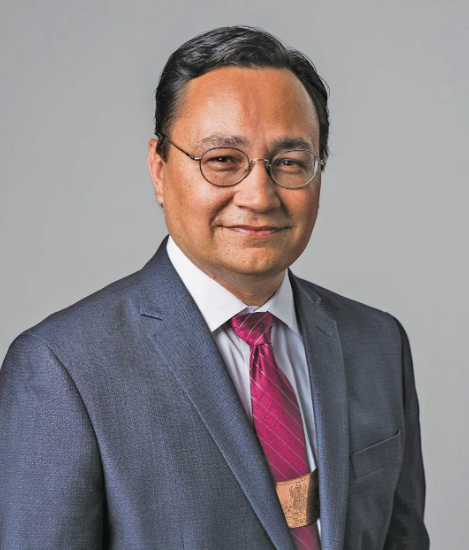
- Details
- By Chuck Hoskin Jr
Guest Opinion. Cherokee Nation leads in growing the economy, creating jobs, and improving the well-being not just for our citizens — but for all of northeast Oklahoma. We are constantly seeking ways to support and increase access to health care, education opportunities and economic development, among other top Cherokee Nation priorities.
Cherokee Nation’s latest move toward these goals is a partnership with Rogers State University to further the Claremore institution’s growth in STEM education and allied health programs. Our $4 million commitment will support construction of RSU’s proposed Center for Science and Technology where students can train for careers in health, technology and other science-related fields.
The center will become RSU’s new home for programs in science, engineering, mathematics, and technology, featuring about 52,000 square feet of lab, classroom and office space. The partnership to build the facility includes a 10-year provision for up to 10 Cherokee Nation citizens to have tuition and mandatory fees covered by the Rogers State University Foundation.
The new program will support health professionals and beyond, ensuring students are well-prepared for taking skilled jobs with growing opportunities and pay. Much like our collaborations with the Oklahoma State University College of Osteopathic Medicine at the Cherokee Nation, Northeastern State University’s College of Optometry and the OU Health Stephenson Cancer Center in Tulsa, we are creating great educational opportunities that meet critical health needs for Cherokee Nation priorities and all of Oklahoma.

We see stacking success in every investment into Cherokee Nation Health Services. Our Cherokee health program is the largest tribally operated health care system in the United States, with about 220 full-time providers and more than 2,700 health service employees, receiving almost 2 million patient visits annually.
The foundation of health and well-being built by our health system leads to greater prosperity for future Cherokee generations. We have dramatically expanded our health care capacity, yet demand is still great, with appointments filling up rapidly every time we add providers. As our services and world-class facilities continue to grow, we need highly trained nurses and specialized health care professionals to make the most out of our investments.
Just as we need skilled professionals to fill facility expansions, the state of Oklahoma has health care workforce shortages that started before the COVID-19 pandemic. According to the Oklahoma Department of Human Services, the current number of nurses is insufficient to meet demand, which will only increase through 2030. The study shows registered nurses – already near the most pressing need for Oklahoma health care – will become the top health care staffing need by 2030.
Oklahoma is not alone. A national workforce shortage leaves 75 million Americans without adequate care in health professional shortage areas, according to the U.S. Health Resources and Services Administration.
In the truest spirit of Gadugi, investments into nursing programs and health care workforce training not only lead to Cherokee prosperity but also support the needs of our neighbors. At the Cherokee Nation and our partners at RSU and other schools, we are pairing excellent education and career opportunities with chances to heal and provide great care for one another.
Chuck Hoskin, Jr. is the principal chief of the Cherokee Nation.
More Stories Like This
The Lie We Keep Telling About Wounded KneeAnother Weapon of Mass Destruction
Colorado cannot heal until it confronts Sand Creek honestly
Native American Mothers Deserve to Live
Technology Rooted in Tradition is Strengthening Cherokee Nation
Help us defend tribal sovereignty.
At Native News Online, our mission is rooted in telling the stories that strengthen sovereignty and uplift Indigenous voices — not just at year’s end, but every single day.
Because of your generosity last year, we were able to keep our reporters on the ground in tribal communities, at national gatherings and in the halls of Congress — covering the issues that matter most to Indian Country: sovereignty, culture, education, health and economic opportunity.
That support sustained us through a tough year in 2025. Now, as we look to the year ahead, we need your help right now to ensure warrior journalism remains strong — reporting that defends tribal sovereignty, amplifies Native truth, and holds power accountable.
 The stakes couldn't be higher. Your support keeps Native voices heard, Native stories told and Native sovereignty defended.
The stakes couldn't be higher. Your support keeps Native voices heard, Native stories told and Native sovereignty defended.
Stand with Warrior Journalism today.
Levi Rickert (Potawatomi), Editor & Publisher

